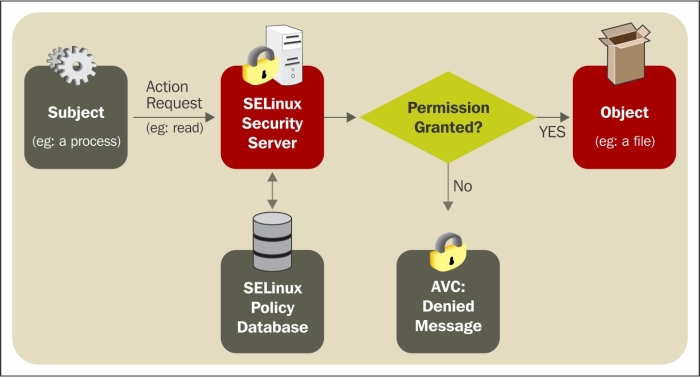SELinux
SELinux is a security enhancement for the Linux kernel, and is developed by the National Security Agency's office of Information Assurance. It has a policy-based architecture and is one of the Linux security modules that is built on the interface of Linux Security Modules (LSM) that aims at military-level security.
Currently, it is shipped with a large number of distributions, including the most well known and often used ones, such as Debian, SuSe, Fedora, Red Hat, and Gentoo. It is based on MAC on which administrators can control all interactions with the user space components of a system. It uses the concept of least privileges: here, by default, a user and application have no rights to access the system resources since all of them are granted by an administrator entity. This makes up the part of the system security policies and its emphasis is shown in the following figure:

The basic functionalities inside SELinux are sandboxed with the help of the implementation of MAC. Inside...
























































